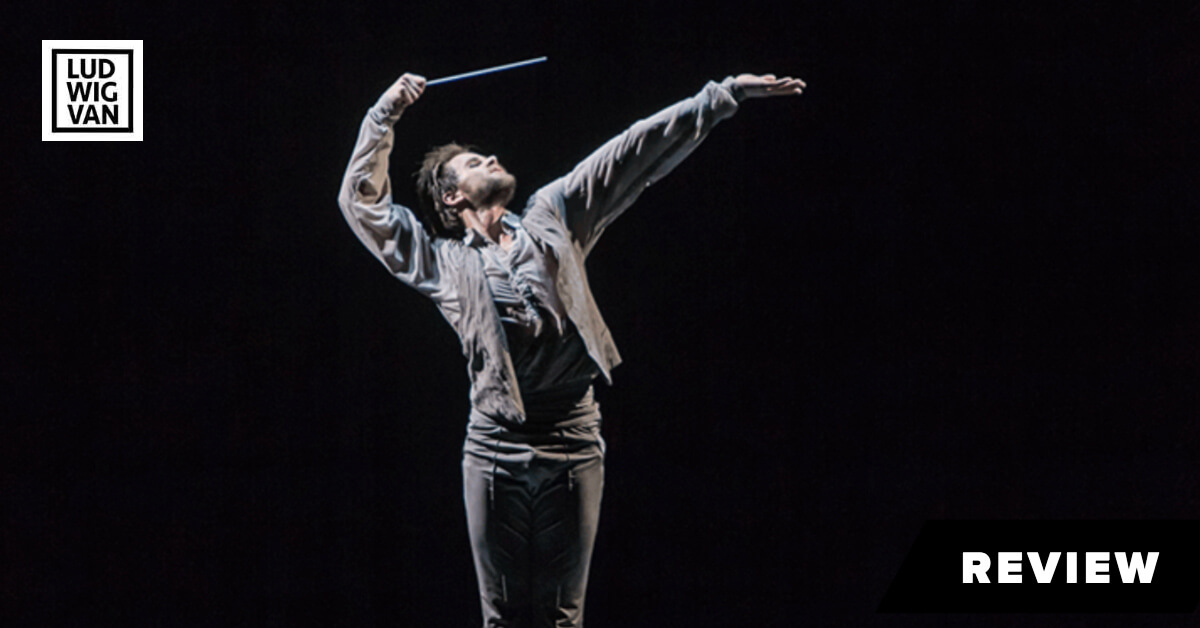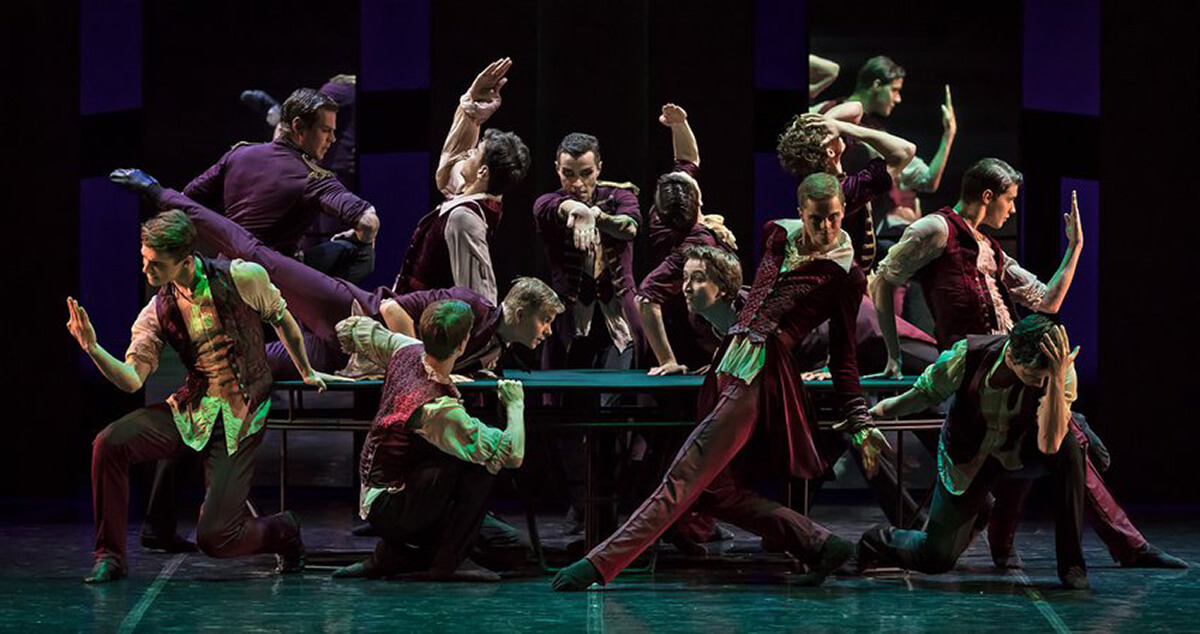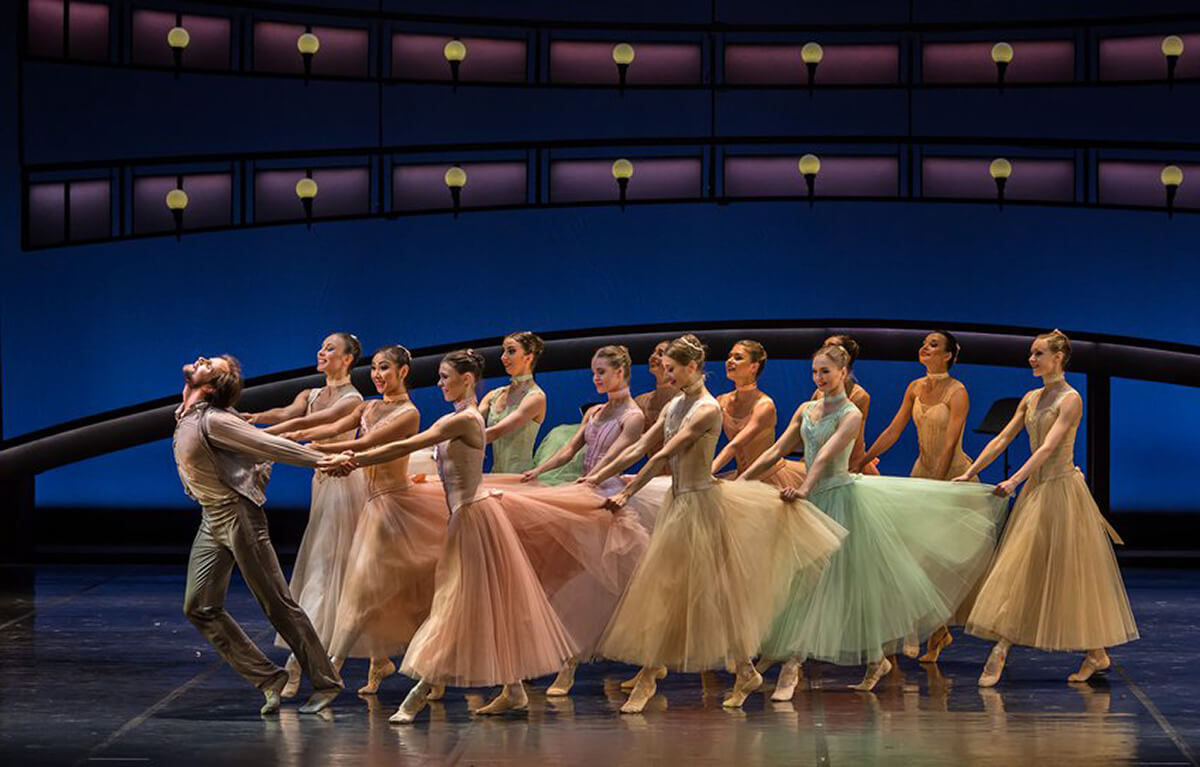While simplistic in its approach, Eifman Ballet’s take on Tchaikovsky oozes with creativity and is time well spent.

Show One Productions & TO Live/Eifman Ballet of St. Petersburg, Tchaikovsky. PRO et CONTRA, choreographed by Boris Eifman, Sony Centre, May 9 to 11. Tickets available at www.sonycentre.ca
Russian choreographer Boris Eifman is a controversial figure in the ballet world. Audiences love him, critics are mixed, while ballet purists are downright condescending. This is the fourth time that his Eifman Ballet of St. Petersburg has swung through town performing one of his full-length works, and Tchaikovsky Pro et Contra encapsulates all the reasons why you either love Eifman, or you hate him. I always find his programs thoroughly enjoyable.
Let me explain. The program notes on Eifman use very highfaluting language to describe how experimental he is, how innovative, how unique. The text describes his “psychological ballets”, and that he is a philosopher of dance. Well, he’s not. His contemporary ballet choreography, in fact, is quite a conventional mix of classical technique and modern dance influences. What distinguishes Eifman is his naked, unabashed and unashamedly emotional outpouring. His narrative works tell stories in which passions rule the choreography. Eifman is the master of transforming melodrama into movement. If there is any way to layer in more sentimentality, he will find it, and I approach each new work of his wondering just how much sturm und drang is going to be unleashed on the stage. In other words, his ballets are one big soap opera, and that’s why Eifman makes me smile.
To give Eifman his due, the choreographer is fearless in coming up with original scenarios such as Tchaikovsky Pro et Contra. The title, I take to mean, are the things working in favour of the beloved composer (his musical genius), and those against (his tortured soul). The ballet takes the form of an inner dialogue where the two forces collide, or as Eifman himself says, “his music is a confession, full of pain and anger”. To pull this off, Eifman has fashioned two Tchaikovskys, the composer (Oleg Gabyshev) and his inner voice or double (Igor Subbotin). On one hand, Gabyshev, operating in real life, endures a neverending parade of tortuous movement. On the other, his genius creates brilliant work, and this gives Eifman a chance to introduce slices of Tchaikovsky’s ballets and operas where Subbotin takes on key roles such as von Rothbart from Swan Lake, Drosselmeyer from The Nutcracker, Onegin from Eugene Onegin and Herman from The Queen of Spades. On an interesting note, Eifman is expecting the audience to be conversant to these artistic references. While the two ballets would be somewhat familiar, I wonder how many people know the operas?

The two female roles are women who figure prominently in Tchaikovsky’s life. The first is his ill-fated wife Antonina Milyukova (Lyubov Andreyeva). The composer was a homosexual who should never have married, and both Tchaikovsky and Milyukova were destroyed by this act. Oddly, I thought there would be a strong gay theme in the ballet, but there wasn’t. It seems that Eifman manifests that aspect in the passionate duets between the composer and his double. The other woman is Nadezhda von Meck (Alina Petrovskaya), a patron of the arts who was Tchaikovsky’s benefactor. Her largesse gave him the financial security to compose fulltime.
So here’s the breakdown of the ballet. Tchaikovsky, the composer, is filled with torment, and there is far too much of his inner angst permeating the ballet. (Eifman always needs a good editor.) The composer only snaps out of this perpetual whine when in the act of creating. His relationship with his double is love/hate writ large. Meanwhile, his scenes with Milyukova show a beguiling girl who becomes relentless in her pursuit of Tchaikovsky. She ultimately slides into promiscuity and madness. Their duets move from flirtation, to passion, to loathing. As for von Meck, in real life she stipulated that she and Tchaikovsky must never meet. They corresponded by letter, and Eifman shows this odd relationship through formal and stately duets where the two never look at each other, where their touching is very tentative. And another interesting note, Eifman assumes that the audience will know this fact about von Meck and Tchaikovsky. The rest of the cast depicts fictional characters, but I should point out that talented dancer Daniel Rubin gets to perform all the virtuoso young man roles from the ballets and operas – the Nutcracker Prince, Lensky and Joker (an Eifman invention to augment The Queen of Spades sequence).

I love to see where Eifman will put in his ensemble numbers. In this ballet, we get a spirited dance with umbrellas and a glittering party scene, for example. The male corps has a lot to do. They are von Rothbart’s evil companions, and soldiers at a card game from The Queen of Spades. The female corps are swans that keep gliding in and out, representing tension and turmoil. Eifman is very good at creating visual images. The card table becomes an integral part of the choreography, culminating with Herman being impaled on it.
Creating an original scenario and pulling it off in dance is no mean feat. Eifman deserves kudos for having the imagination to do this, and more to the point, to attempt to portray complicated plot developments and personal relationships. He does go on too long in the angst department, but his recreation of the fictional characters, particularly the main quartet from Onegin is masterful. The ballet is filled with interesting vignettes that move between real life and creation. The duets between the two Tchaikovskys, where the worlds come in direct conflict, are showy and athletic. Eifman’s movement palette is marked by lyrical grace, and watching his well-schooled dancers is easy on the eyes. All the leads are wonderful, and certainly into character. To be an Eifman dancer means you have to have expression up the whazoo. As always, the theatrical values in terms of set and costumes are strong.
We can’t leave this discussion without pointing out Eifman’s discerning choice of Tchaikovsky’s music for his score, which includes the composer at his most passionate and melancholy, specifically, all of Symphony No. 5, two excerpts from Serenade for strings in C major, and a short section from Liturgy of St. John Chrysostom. For his finale, Eifman has gone with the fourth movement of Symphony No. 6, with “Pathétique” being the perfect emotional conclusion. The spirited Capriccio Italien does make an appearance as a rambunctious dance for the card players.
Admittedly, I do find Eifman simplistic in his approach, but I sincerely admire his creativity. An evening with Eifman Ballet of St. Petersburg is time well spent.
LUDWIG VAN TORONTO
Want more updates on classical music and opera news and reviews? Follow us on Facebook, Instagram or Twitter for all the latest.
- INTERVIEW | Actor Diego Matamoros Takes On Icon Walt Disney In Soulpepper Production Of Hnath Play - April 16, 2024
- SCRUTINY | Opera In Concert Shine A Light On Verdi’s Seldom Heard La Battaglia Di Legnano - April 9, 2024
- SCRUTINY | Lepage & Côté’s Hamlet Dazzles With Dance And Stagecraft Without Saying Anything New - April 5, 2024



